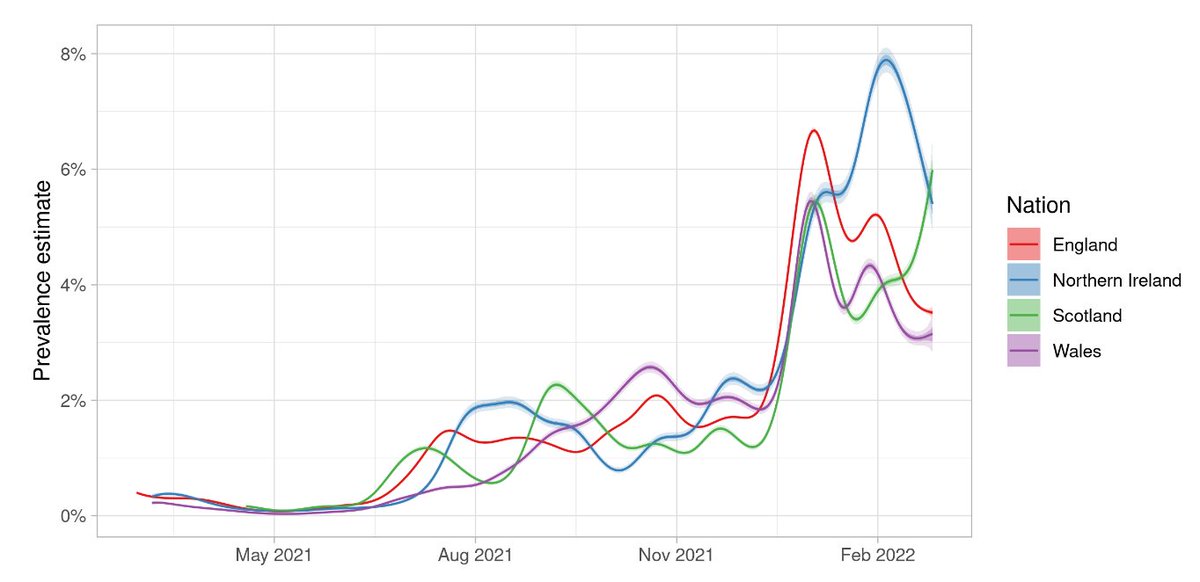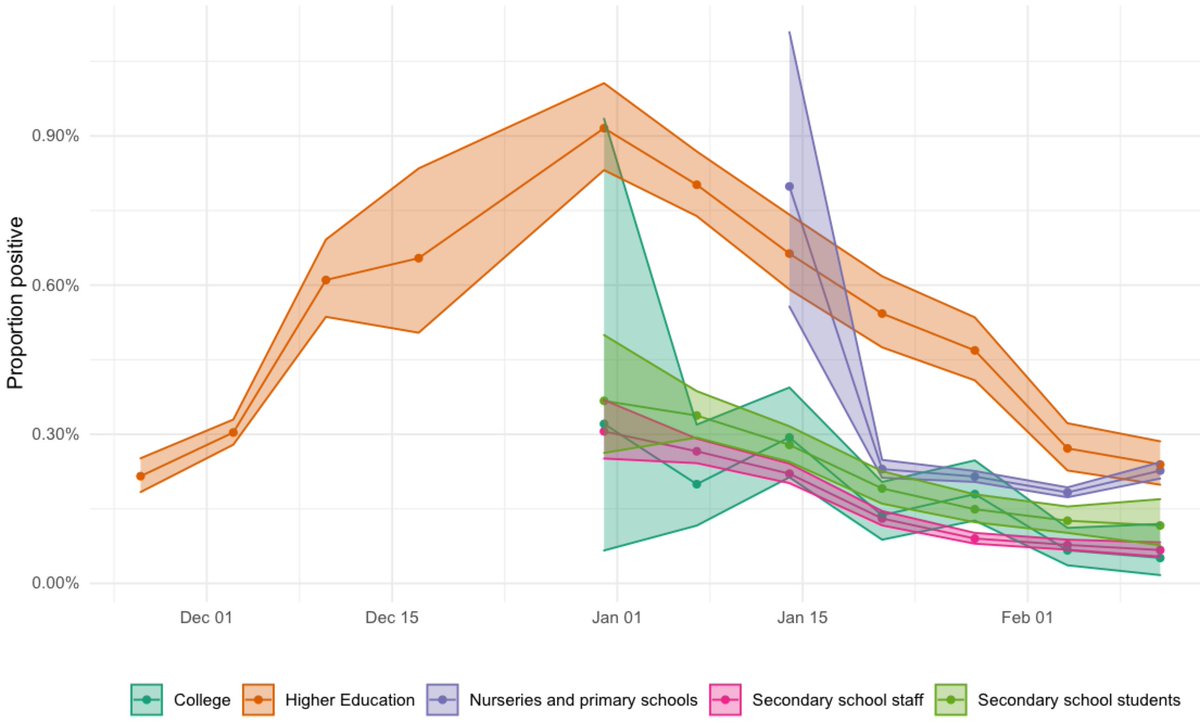
Professor of Infectious Disease Dynamics at @LSHTM and @cmmid_lshtm; @wellcometrust Senior Research Fellow
2 subscribers
How to get URL link on X (Twitter) App


 First, a caveat. This is all based on pillar 2 testing and therefore affected by test-seeking behaviour. We know about reported dates of symptom onset but not how severe symptoms were, and/or what prompted people to seek a test. This can bias the results shown here. 2/9
First, a caveat. This is all based on pillar 2 testing and therefore affected by test-seeking behaviour. We know about reported dates of symptom onset but not how severe symptoms were, and/or what prompted people to seek a test. This can bias the results shown here. 2/9

 First, incidence of infections. Using previous estimates by @HellewellJoel et al. we relate positivity to new infections, taking into account that it can take a few days from infection to PCR positive, and probability of testing positive varies over the course of infection. 2/9
First, incidence of infections. Using previous estimates by @HellewellJoel et al. we relate positivity to new infections, taking into account that it can take a few days from infection to PCR positive, and probability of testing positive varies over the course of infection. 2/9 


 Every time a large-scale survey is conducted with a diagnostic test one can calculate a lower bound of test specificity by assuming all positive test results were false positives. 2/7
Every time a large-scale survey is conducted with a diagnostic test one can calculate a lower bound of test specificity by assuming all positive test results were false positives. 2/7


